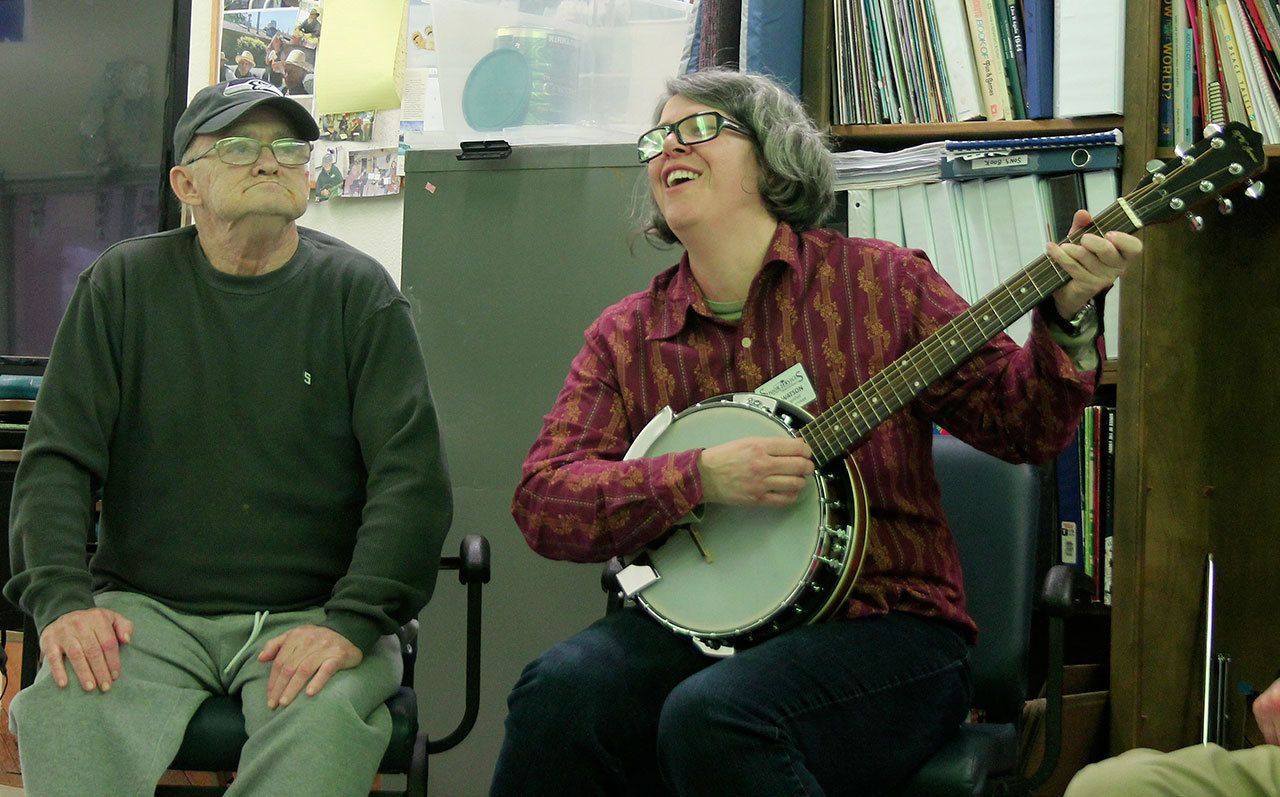On the surface, the Time Together Program at South Whidbey Senior Center is a health program for those in their twilight years that encourages activity in order to keep the mind and body fresh.
But for the program’s participants, it’s much more than that. It’s a social hour where laughter, jokes and often precious moments are shared with close friends.
“We’ve all become good friends,” member Dan Babbitt said. “We’re all in the same age group, and we all take care of each other.”
Time Together has been on a mission for 20 years to combat the isolation that can often stem from physically limiting conditions as well as mentally deteriorating conditions such as Alzheimer’s and dementia. In the program, participants experience a sense of community and are given a platform to socialize on a regular basis.
The program’s staff say encouraging participants to get out of the house and be part of group activities is a good way to avoid isolation and depression, and gives members something to look forward to every week.
The benefits are evident when sitting in on the program. Jokes are exchanged and members give each other a hard time for good fun.
People talk of their past, of current events and what lies ahead. The members are in the now, and the ubiquitous cheek-to-cheek smiles are evidence of that.
The program meets Monday through Friday and has space for 12 members.
The South Whidbey Senior Center is aiming to expand the program to make room for more people. A similar program in Oak Harbor is kicking off April 5.
“There’s a difference between waking up in the morning and having your caregiver tell you you’re going to go out and do something today rather than stay at home,” Program Director Mel Watson said. “The difference is having a life and not having a life. Sitting in front of a TV can quickly assist in someone’s decline.”
Staff members and volunteers lead the program through a range of activities. There is always an element of exercise. Group chats are a daily feature, and discussions touch upon the participants’ past, historical events, medical and technological advances and the future. Program members can also be regularly seen flexing their creative muscle by singing, dancing and painting.
The creative exercises have been known to make participants access certain memories and skills that haven’t come out in years.
Watson says staff members also utilize technology to support peoples’ memories with visual aids, while it also harbors an interest in modern technologies.
“People often find new parts of themselves that they maybe never investigated themselves,” Watson said. “We always focus on what people are able to do, not what they’re unable to do.”
Time Together also offers much needed respite for 24-hour caregivers and family members. Watson says the program is just as beneficial for the mental and physical health of caregivers as the participants.
Caregivers are able to enjoy a four-hour break five days a week, giving them a chance to exercise or just unwind. Watson says it enables families to stay together longer, as caregivers don’t suffer from burnout.
More than anything, though, Time Together keeps its members sharp. Regular social interaction goes a long way to allow participants to enjoy the now and the company of others. And there is room for new additions — both for the program and team of volunteers.
“The companionship of meeting people you wouldn’t otherwise meet works pretty well,” Babbitt said. “It reminds me that if you think you’re old, you’re old. But if you think you’re young, you’re young.”




